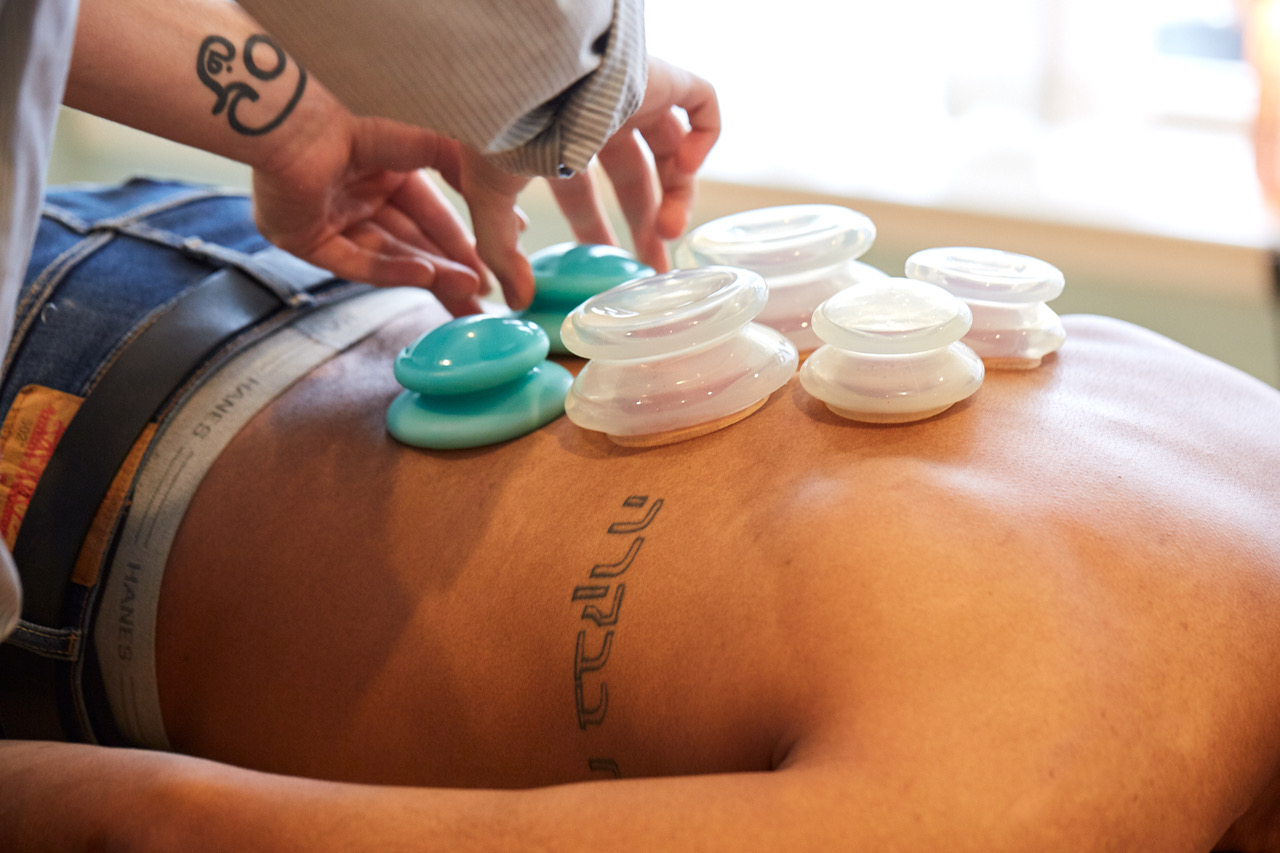Every week we get calls from people asking if we offer cupping. The answer is Yes! We’ve always used cupping in our practice.
Cupping’s popularity skyrocketed when swimming superstar Michael Phelps showed up at the 2016 Olympics with recent cupping marks on his back. He used cupping to help speed his recovery after workouts. Since then, everyone’s gotten on the cupping bandwagon!
Cupping is an ancient form of traditional medicine with a range of benefits. This ancient therapy works by bringing fresh blood carrying oxygen and nutrients to a specific body area. Traditional healers recognize that stagnation creates pain. Remove the stagnation, and the pain is removed. Cupping also brings toxins and inflammation to the surface for release.
Rich History of Cupping
From East to West, cupping treatments have been a cross-cultural part of healing. The oldest medical text – the Ebers Papyrus, written in 1550 BC – speaks of cupping being used by ancient Egyptians for various ailments.
Many cultures, including primitive Shamanic cultures, Egyptian, Arabic, Jewish, Mexican and Asian societies, practiced cupping. Techniques and styles varied according to the geographic locations where they were practiced. Even so, all cultures utilized cupping for the same purpose – to support the body’s ability to heal itself.
Here at Six Fishes, we combine cupping with many of our acupuncture treatments.
What can cupping do for you?
There are many reasons people get cupping treatments – including help with pain, inflammation, blood flow, and the relaxation and benefits of a deep-tissue massage.
While we create custom therapies for everyone, listed below are some of the reasons we use cupping in our practice:
- To Release toxins in the body
- To Boost immunity
- To reduce stress and anxiety
- To Clears lung congestion from a cold
- To Relieve asthma symptoms
- To Clear colon blockages and improve digestion
- To Relieve joint pain
- To Relieve Migraines
- To Reduce stretch marks and scars
- To Reduce wrinkles
TYPES OF CUPPING
Dry Cupping – Also known as fire cupping, where a glass or silicone cup is heated, then placed on the skin, creating a vacuum. These days, we can’t use this method because we can’t blow out the flame through our masks!
Wet Cupping – Also known as Hijama. This method uses small slits made in the skin. Then the cups are placed over the slits, and blood is drawn up with the skin. At this time, we don’t do Wet Cupping here at Six Fishes.
Massage Cupping –kind of like an inverted massage. First, we apply oil or liniment to the skin, then cups are moved up and down the area. The cup suction creates a feeling of deep tissue massage and deep muscle relaxation. This is great for reducing stress and relieving muscle tension.
Flash Cupping – Cups are rapidly placed and removed from the body.
Facial Cupping – Facial cupping has become increasingly popular for tightening the skin and giving it a healthy glow. Facial cupping is also used to treat facial paralysis, also known as Bells Palsy, due to prolonged exposure to cold and wind.
A couple of years ago, Beata was featured on Today.com demonstrating facial cupping. Check out our blog on *Note: In keeping with our Covid 19 guidelines, we do not currently treat the face with cupping.
SIDE EFFECTS AND RISKS
Cupping is generally safe when done by a licensed professional. You may notice slight swelling, which generally goes away within a few hours. Often, but not always, there are dark spots where the cups were, which progressively lighten over 5-7 days. These are fun to show off and are a great conversation starter!
Prep for cupping session: Wear loose clothing. Keep in mind we may use oils or creams for gliding cupping, so dress accordingly.
Afterward – We encourage you to hydrate after your cupping session for maximum results.
Cupping is Not Right for You IF….
· You have had a cardiac arrest in the past 6 months
· You are in organ failure (renal failure, hepatic failure, and heart failure)
· You have a pacemaker
· You have hemophilia or similar condition
· Any other reason your therapist deems cupping not the best treatment for you
Ready to try cupping? Call us at 215-772-0770, Or schedule right online
Sources;
http://www.greekmedicine.net/therapies/Hijama_or_Cupping.html
https://www.sciencedirect.com/science/article/pii/S2005290117302042
https://www.higherhealthspineandsport.com/blog/cupping
https://cuppingresource.com/cupping-techniques/
https://www.healthline.com/health/facial-cupping#home-vs-professional-cupping
https://www.nhregenerativecenter.com/blog/heres-why-cupping-has-become-so-popular
https://pubmed.ncbi.nlm.nih.gov/28494847/
https://www.timesofisrael.com/the-yiddish-secret-propelling-michael-phelps/
